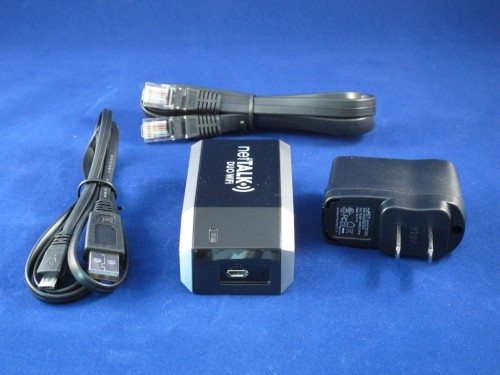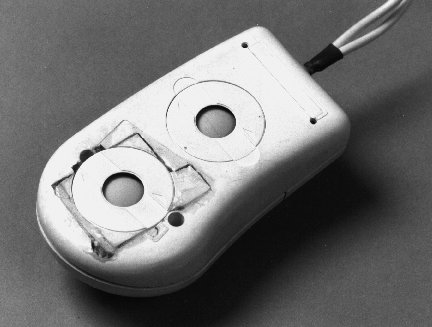- Nettalk Network & Wireless Cards Driver Download For Windows 10 32-bit
- Nettalk Network & Wireless Cards Driver Download For Windows 10 Windows 7
- Nettalk Network Provider
- Specialties: Our flagship product the TK6000 connects you to the largest digital phone network in the world, the Internet, where you can make a lifetime of unlimited phone calls within the USA and Canada. Enjoy free TK6000 to TK6000 calling.
- This video demonstrates the ease of connecting your netTALK DUO to a router. Once connected you can instantly begin receiving and making calls to all of your.
NetTALK DUO WiFi Setup Choose an option to start setting up your new DUO WiFi. WiFi One-Touch Setup (Easy) Windows Users Setup Guide Mac Users Setup Guide.
 [<--] Return to the list of AI and ANNlectures
[<--] Return to the list of AI and ANNlecturesReview of Backpropagation
The backpropagation algorithm that we discussed last time is used witha particular network architecture, called a feed-forward net. In thisnetwork, the connections are always in the forward direction, frominput to output. There is no feedback from higher layers to lower layers.Often, but not always, each layer connects only to the one above.
This architecture has the advantages:- It permits the use of the backpropagation algorithm.(This might be a good time to review the description of the backpropagation algorithm from the last lecture.)
- It guarantees that the output will settle down to a steady statewhen an input is presented. (This does not guarantee that the learningprocedure will converge to a solution, however.)When feedback is present, there is thepossiblility that an input will cause the network to oscillate.
There are modifications of the backpropagation algorithm for recurrentnets with feedback, but for the general case, they are rather complicated.In the next lecture, we will look at a special case of a recurrent net, theHopfield model, for which the weights may easily be determined, and whichalso settles down to a stable state. Although this second property isa very useful feature in a network for practical applications, it isvery non-biological. Real neural networks have many feedback connections,and are continually active in a chaotic state. (The only time they settledown to a steady output is when the individual is brain-dead.)
As we discussed in the previous lecture, there are a lot of questionsabout the backpropagation procedure that are best answered byexperimentation. For example: How many hidden layers are needed? What isthe optimum number of hidden units? Will the net converge faster if trainedby pattern or by epoch? What are the best values of learning rate andmomentum to use? What is a 'satisfactory' stopping criterion for thetotal sum of squared errors?
The answers to these questions are usually dependent on the problem to besolved. Nevertheless, it is often useful to gain some experience by varyingthese parameters while solving some 'toy' problems that are simple enough thatit is easy to understand and analyze the solutions that are produced by theapplication of the backpropagation algorithm.
Backpropagation demonstrations
We will start with a demonstration of some simple simulations, usingthe bp software from the Explorations in Parallel Data Processing book. If you havethe software, you might like to try these for yourself. Most of the auxillaryfiles (template files, startup files, and pattern files) are included on thedisks in the 'bp' directory. For these demos, I've created some others, andhave provided links so that they can be downloaded. Appendix C of'Explorations' describes the format of these files.
The XOR network

This is the display that is produced after giving the command
and then 'strain' (sequential train). The maximum total squared error('tss') has been set to 0.002 ('ecrit').This converged with a total squared error of 0.002, after 782 cycles(epochs) through the set of four input patterns. After the 'tall'(test all) command was run from the startup file, the current patternname was 'p11'. The xor.pat file assigned this name to the inputpattern (1,1). The 'pss' value gives the sum of the squared error forthe current pattern. The crude diagram at the lower left shows howthe values of the variables associated with each unit are displayed.With the exception of the delta values for each non-input unit, whichare in thousandths, the numbers are in hundredths. Thus, hidden unitH1 has a bias of -2.89 and receives an input from input unit IN1weighted by 6.51 and an input from IN2 also weighted by 6.51. Youshould be able to verify that it then has a net input of 10.13 and anactivation (output) of 0.99 for the input pattern (1,1). Is theactivation of the output unit roughly what you would expect for thisset of inputs? You should be able to predict the outputs of H1, H2,and OUT for the other three patterns. (For the answer, click here.)
From the weights and biases, can you figure out what logic functionis being calculated by each of the two hidden units? i.e., what'internal representation' of the inputs is being made by each of theseunits? Can you describe how the particular final values of the weightsand biases for the output unit allow the inputs from the hidden units toproduce the correct outputs for an exclusive OR?
The 4-2-4 Encoder Network
Nettalk Network & Wireless Cards Driver Download For Windows 10 32-bit

This network has four input units, each connected to each of the twohidden units. The hidden units are connected to each of four output units.
This doesn't do anything very interesting! The motivation for solvingsuch a trivial problem is that it is easy to analyze what the net is doing.Notice the 'bottleneck' provided by the layer of hidden units. With alarger version of this network, you might use the output of the hiddenlayer as a form of data compression.

Can you show that the two hidden units are the minimum number necessary forthe net to perform the mapping from the input pattern to the outputpattern? What internal representation of the input patterns will be formedby the hidden units?
Let's run the simulation with the command
With ecrit = 0.005, it converged after 973 epochs to give the results:
Another run of the simulation converged after 952 epochs to give:

Are the outputs of the hidden units what you expected? These twosimulation runs used different random sets of initial weights. Noticehow this resulted in different encodings for the hidden units, but thesame output patterns.
The 16 - N - 3 Pattern RecognizerAs a final demonstration of training a simple feedforward net withbackpropagation, consider the network below.
The 16 inputs can be considered to lie in a 4x4 grid to crudelyrepresent the 8 characters (, /, -, |, :, 0, *, and ') with a patternof 0's and 1's. In the figure, the pattern for ' is beingpresented. We can experiment with different numbers of hidden units,and will have 3 output units to represent the 8 binary numbers 000 -111 that are used to label the 8 patterns.In class, we ran the simulation with 8 hidden units with the command:
This simulation also used the files 16x8.net,orth8.pat (the set of patterns), andbad1.pat (the set of patterns with one of the bitsinverted in each pattern). After the net was trained on this set ofpatterns, we recorded the output for each of the training patterns in thetable below. Then, with no further training, we loaded the set ofcorrupted patterns with the command 'get patterns bad1.pat', andtested them with 'tall'.
You may click here to see some typicalresults of this test. Notice that some of these results for thecorrupted patterns are ambigous or incorrect. Can you see anyresemblences between the pattern that was presented and the patternthat was specified by the output of the network?
There are a number of other questions that we might also try toanswer with further experiments. Would the network do a better orworse job with the corrupted patterns if it had been trained toproduce a lower total sum of squared errors? Interestingly, theanswer is often 'NO'. By overtraining a network, it gets better atmatching the training set of patterns to the desired output, but itmay do a poorer job of generalization. (i.e., it may have troubleproperly classifying inputs that are similar to, but not exactly thesame as, the ones on which it was trained.) One way to improve theability of a neural network to generalize is to train it with 'noisy'data that includes small random variations from the idealized trainingpatterns.
Another experiment we could do would be to vary the number ofhidden units. Would you expect this network to be able discriminatebetween the 8 different patterns if it had only 3 hidden units? (Theanswer might surprise you!)
NETtalk
Nettalk Network & Wireless Cards Driver Download For Windows 10 Windows 7
Now, let's talk about an example of a backpropagationnetwork that does something a little more interesting than generating thetruth table for the XOR. NETtalk is a neural network, created by Sejnowskiand Rosenberg, to convert written text to speech. (Sejnowski, T. J.and Rosenberg, C. R. (1986) NETtalk: a parallel network that learns to readaloud, Cognitive Science, 14, 179-211.)
The problem: Converting English text to speech is difficult.The 'a' in the string 'ave' is usually long, as in 'gave' or 'brave',but is short in 'have'. The context is obviously veryimportant.
A typical solution: DECtalk (a commercial product made byDigital Equipment Corp.) uses a set of rules, plus a dictionary (alookup table) for exceptions. This produces a set of phonemes (basicspeech sounds) and stress assignments that is fed to a speechsynthesizer.
The NETtalk solution: A feedforward network similar to theones we have been discussing is trained by backpropagation. Thefigure below illustrates the design.
- Input layer
- has 7 groups of units, representing a 'window' of7 characters of written text. The goal is to learn how to pronouncethe middle letter, using the three on either side to provide thecontext. Each group uses 29 units to represent 26 letters pluspunctuation, including a dash for silences. For example, in the groupof units representing the letter 'c', the third unit is set to'1' and the others are '0'. (Question: Why didn't they use amore efficient representation requiring fewer units, such as a binarycode for the letters?)
- Hidden layer
- typically has 80 units, although they tried from0 to 120 units. Each hidden unit receives inputs from all 209 inputunits and sends its output to each output unit. There are no directconnections from the input layer to the output layer.
- Output layer
- has 26 units, with 23 representing differentarticulatory features used by linguists to characterize speech(voiced, labial, nasal, dental, etc.), plus 3 more to encode stressand syllable boundaries. This output is fed to the final stage of theDECtalk system to drive a speech synthesizer, bypassing the rules anddictionary. (This final stage encodes the output to the 54 phonemesand 6 stresses that are the input to the synthesizer.
- Training
- was on a 1000 word transcript made from a firstgrader's recorded speech. (In class we showed this text. Someday,I'll enter it into this web document.) The text is from the book'Informal Speech: Alphabetic andPhonemic Texts with Statistical Analyses and Tables' by Edward C. Carteretteand Margaret Hubbard Jones (University of California Press, 1974).
Tape recording The tape played in class had three sections:
- Taken from the first 5 minutes of training, starting with allweights set to zero. (Toward the end, it begins to sound like speech.)
- After 20 passes through 500 words.
- Generated with fresh text from the transcription that was not partof the training set. It had more errors than with the training set,but was still fairly accurate.
I have made MP3 versions of these three sections which you can access as:
nettalk1.mp3 -- nettalk2.mp3 -- nettalk3.mp3
If your browser isn't able to play them directly, you can download them andtry them with your favorite MP3 player software.
Here is a link to Charles Rosenberg's web sitehttp://sirocco.med.utah.edu/Rosenberg/sounds.html, where you canaccess his NETtalk sound files. (NOTE: Your success in hearing thesewill depend on the sound-playing software used with your web browser.The software that I use produces only static!)
Although the performance is not as good as a rule-based system, itacts very much like one, without having an explicit set of rules.This makes it more compact and easier to implement. It also workswhen 'lobotomized' by destroying connections. The authors claimedthat the behaviour of the network is more like human learning thanthat of a rule-based system. When a small child learns to talk, shebegins by babbling and listening to her sounds. By comparison withthe speech of adults, she learns to control the production of hervocal sounds. (Question: How much significance should weattach to the fact that the tape sounds like a child learning to talk?)
[<--] Return to the list of AI and ANNlecturesDave Beeman, University of Coloradodbeeman 'at' dogstar 'dot' colorado 'dot' edu
Tue Nov 7 14:38:54 MST 2000
definition - nettalk artificial neural network
definition of Wikipedia
Advertizing ▼
Wikipedia
NETtalk is an artificial neural network. It is the result of research carried out in the mid 1980s by Terrence Sejnowski and Charles Rosenberg. The intent behind NETtalk was to construct simplified models that might shed light on the complexity of learning human level cognitive tasks, and their implementation as a connectionist model that could also learn to perform a comparable task.
NETtalk is a program that learns to pronounce written English text by being shown text as input and matching phonetic transcriptions for comparison.
Achievements and limitations
It is a particularly fascinating neural network because hearing the audio examples of the neural network as it progresses through training seems to progress from a baby babbling to what sounds like a young child reading a kindergarten text, making the occasional mistake, but clearly demonstrating that it has learned the major rules of reading.
To those that do not rigorously study neural networks and their limitations, it would appear to be artificial intelligence in the truest sense of the word. Claims have been printed in the past by some misinformed authors of NETtalk learning to read at the level of a 4 year old human, in about 16 hours! Such a claim, while not an outright lie, is an example of misunderstanding what human brains do when they read, and what NETtalk is capable of learning. Being able to read and pronounce text is not the same as actually comprehending what is being read and understanding in terms of actual imagery and knowledge representation, and this is a key difference between a human child learning to read and an experimental neural network such as NETtalk. In other words, being able to pronounce 'grandmother' is not the same as knowing who or what a grandmother is, and how she relates to your immediate family, or what she looks like. NETtalk does not specifically address human-level knowledge representation or its complexities.
NETtalk was created to explore the mechanisms of learning to correctly pronounce English text. The authors note that learning to read involves a complex mechanism involving many parts of the human brain. NETtalk does not specifically model the image processing stages and letter recognition of the visual cortex. Rather, it assumes that the letters have been pre-classified and recognized, and these letter sequences comprising words are then shown to the neural network during training and during performance testing. It is NETtalk's task to learn proper associations between the correct pronunciation with a given sequence of letters based on the context in which the letters appear. In other words NETtalk learns to use the letters around the currently pronounced phoneme that provide cues as to its intended phonemic mapping.
External links
Nettalk Network Provider
This entry is from Wikipedia, the leading user-contributed encyclopedia. It may not have been reviewed by professional editors (see full disclaimer)
